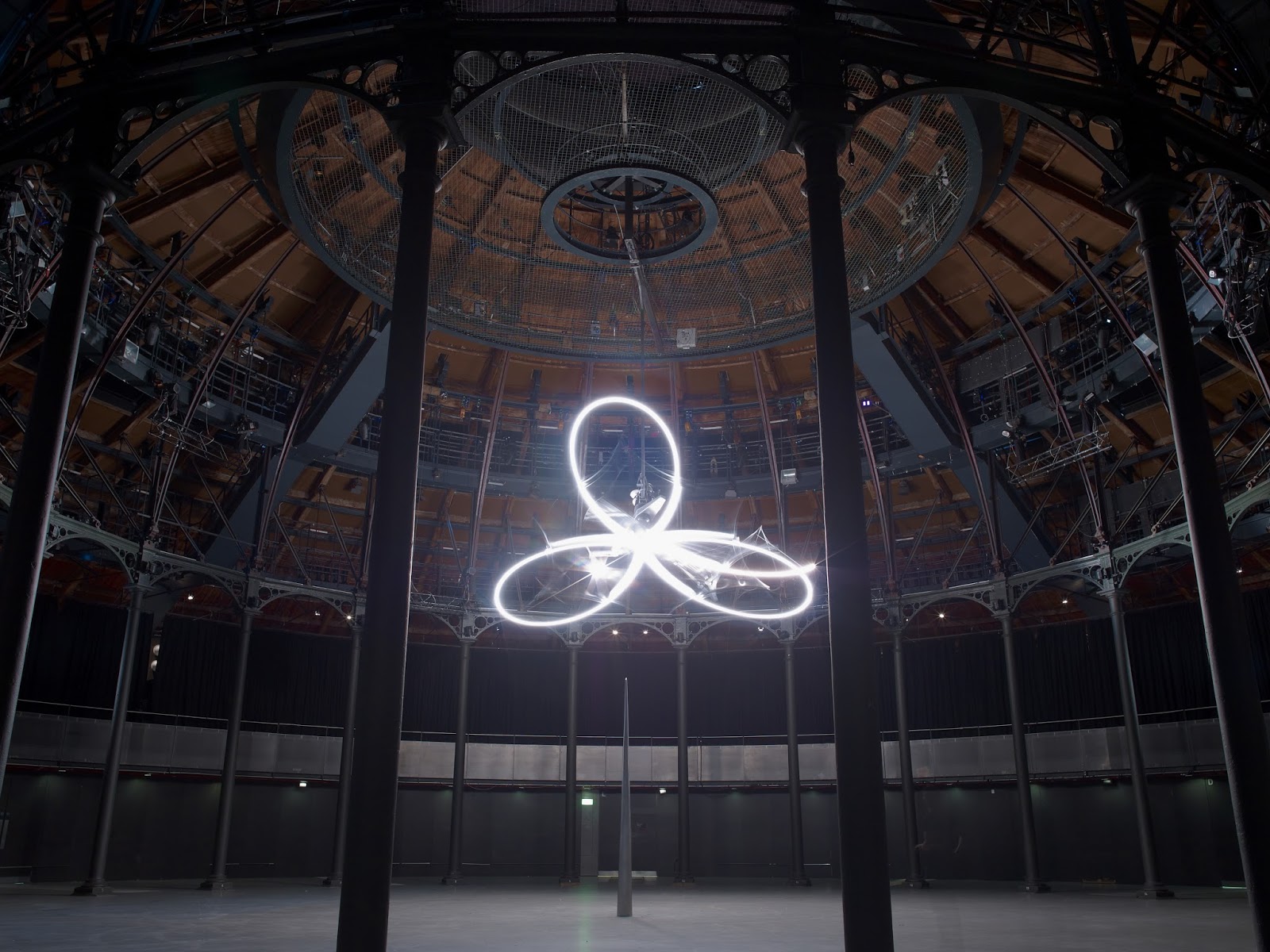09/08/13
Conrad Shawcross:
Timepiece
Roundhouse
1 – 25 August 2013
Enter the Roundhouse this month, and you will find it pitch
black, apart from three starry lights, moving about in the hemispherical dome,
casting eerie shadows through the rafters and down across the floor. These
lights are actually bulbs, attached to the furthest extended points of three long
metallic limbs – arms, each with two joints, moving slowly and steadily,
unfurling as they rotate about a central axis, further punctuated by the
pinnacle of a tall spike, rising from the floor, part and parcel of this
astronomical construct, conceived specifically for the architecture of the
venue, by artist Conrad Shawcross (born 1977).

Interested in the crossovers between geometry and
philosophy, physics and metaphysics, Shawcross, upon being commissioned to
create a site-specific piece for the Chalk Farm location, was struck by the
building’s iconic roundness, as well as by the 24 columns circumscribing the
round. Relating these to how humankind has come to index the day, breaking it
down into 24 hours, Shawcross began his research into the history of clocks –
timepieces – and beyond, into the
history of time. The three arms – or, more accurately, hands – are precisely constructed
so as to accurately mark the passing hours, minutes, and seconds, and the
four-metre spike is intended to act as a gnomon, the shadow-casting element of
the old-fashioned timepiece, a sundial.
Standing or sitting down below, gazing upwards, listening to
the gentle click-clicking of the mechanism, it is like watching a strange and
oversized insect perform a curious and metallic yoga sequence. You cannot help
but be simultaneously struck both by humanity’s enormity in its scientific
progress and prowess, and by its humbling insignificance in the grander scheme
of things. Looking upwards is like gazing out into the night sky, watching the celestial
orbits of the stars. Time, although perfectly matched, nevertheless seems to
slow down. You are invited to reflect and to be calm, listening to and watching,
if not fully comprehending, this reliable constancy of the universe.

Shawcross, who says he wanted, with this work, to make the
familiar [the clock] peculiar again, also confesses to finding it more
interesting to create problems for the viewer than to answer questions. This is
not surprising coming from an artist whose work borders on that of a scientist
and philosopher – studying the universe is bound to open those larger questions
upon which we, in our mere mortality, can only ponder, filled with deserving
awe.
Images:
Conrad Shawcross
Timepiece
(2013)
© Stephen White